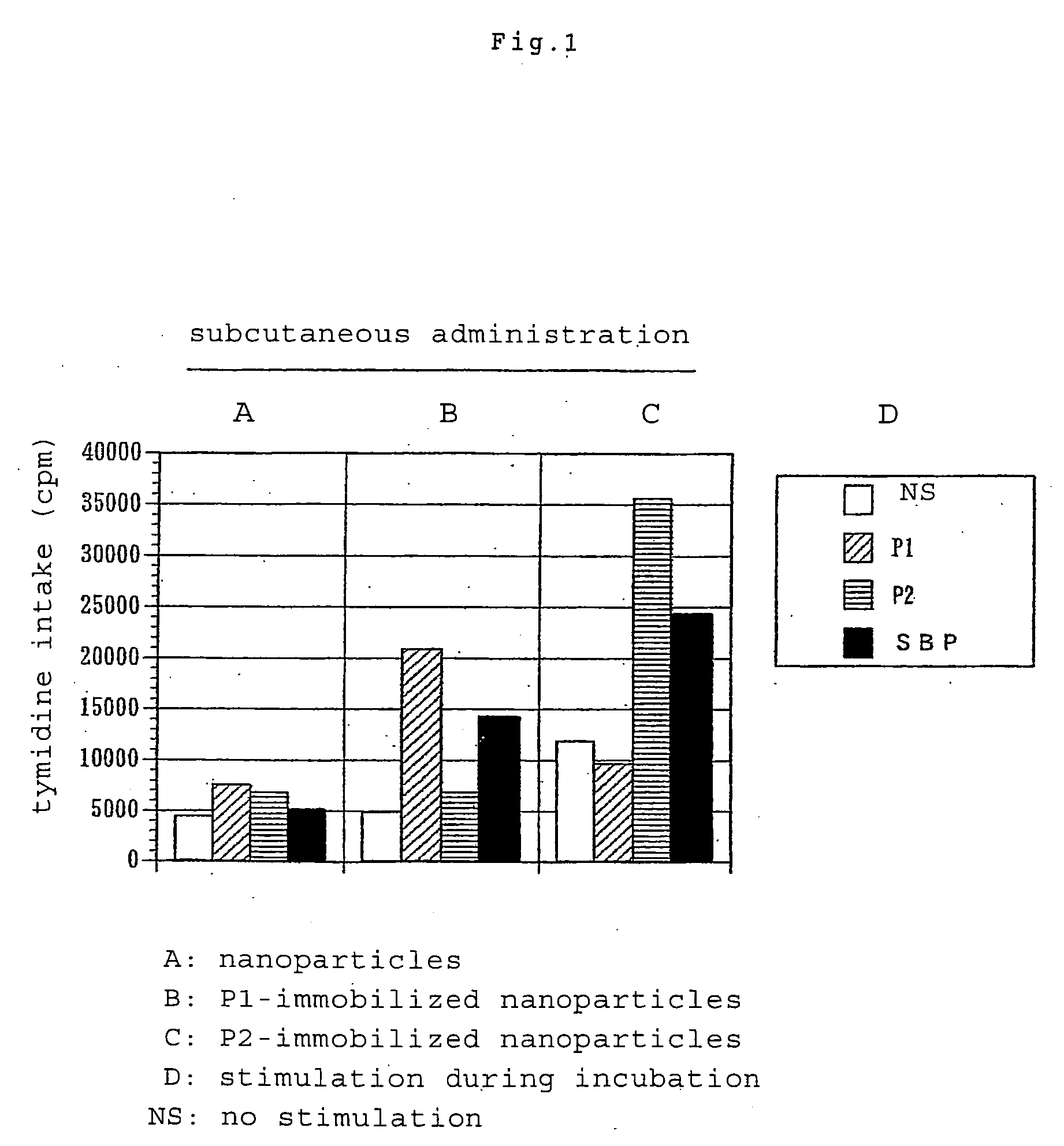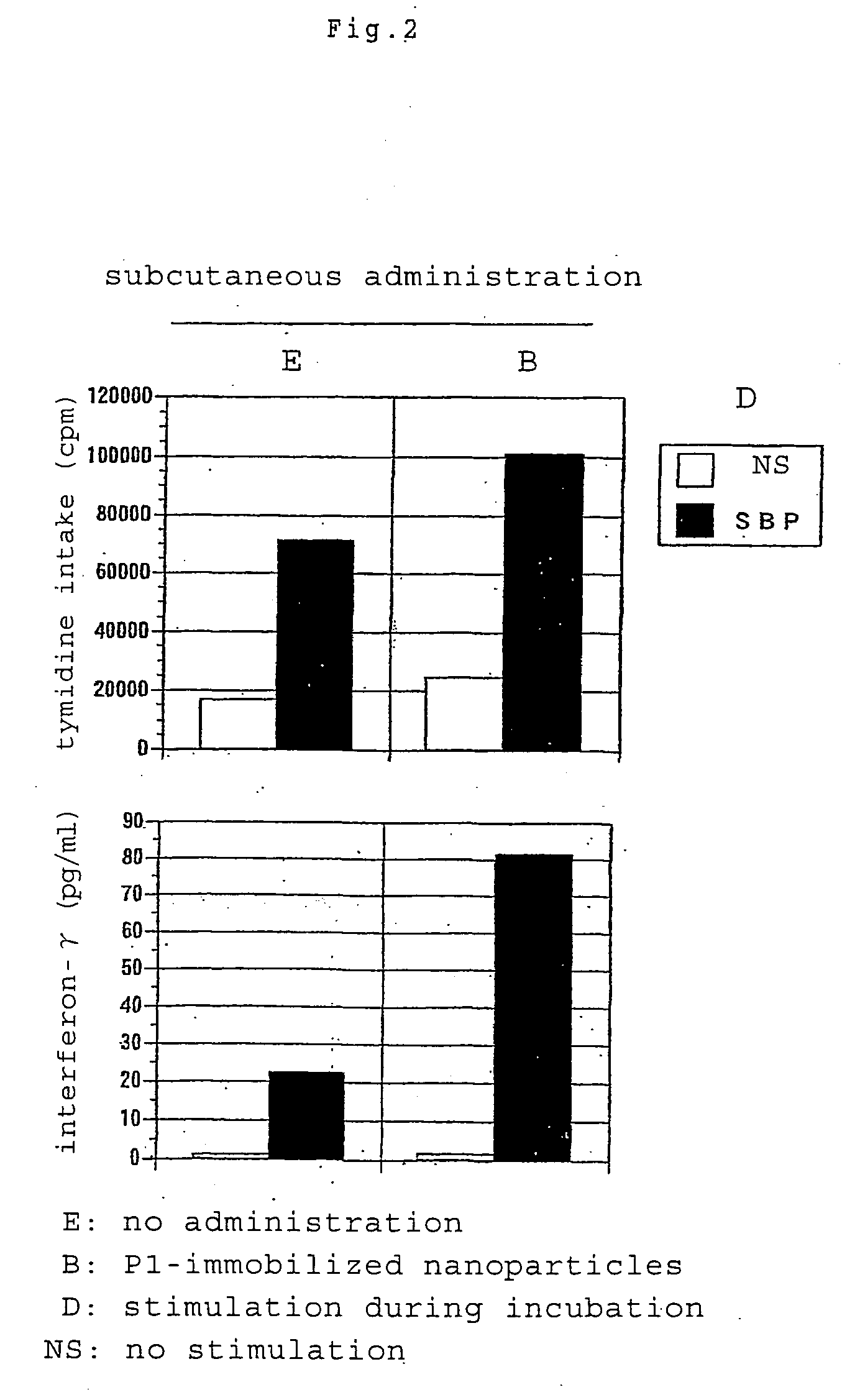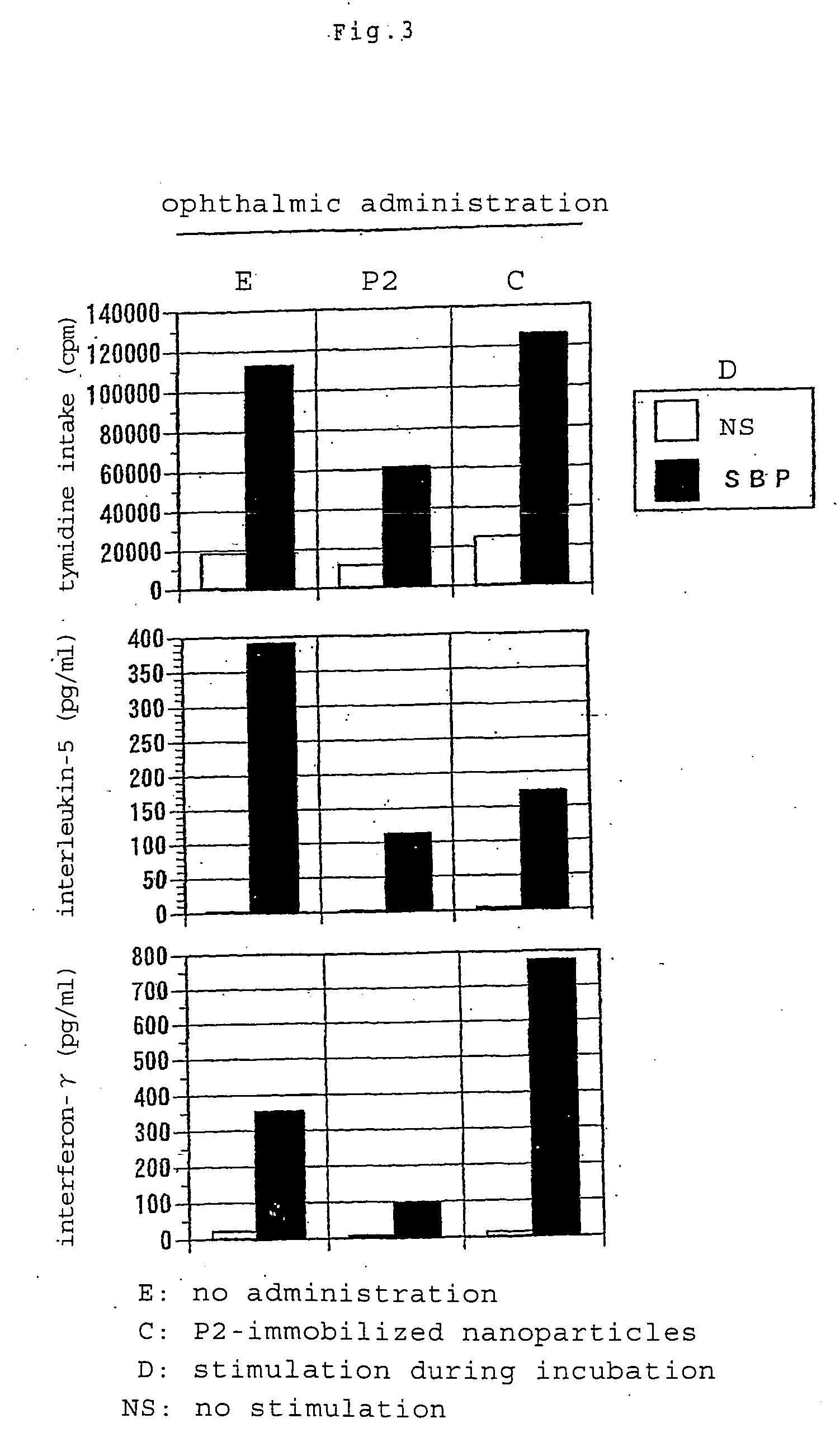Biodegradable nanoparticle having t-cell recognizable epitope peptide immobilized thereon or encapsulated therein
a biodegradable nanoparticle and epitope technology, applied in the direction of peptide/protein ingredients, immunological disorders, antibody medical ingredients, etc., can solve the problems of limited clinical use and likely side effects of treatmen
- Summary
- Abstract
- Description
- Claims
- Application Information
AI Technical Summary
Benefits of technology
Problems solved by technology
Method used
Image
Examples
example 1
[0063](1) Preparation of Mouse Cedar Pollen T Cell Recognizable Epitope Peptides as Converted to PEG (Polyethylene Glycol)
[0064]P1: 277-290; KQVTIRIGCKTSSS (hereinafter referred to as “P1”) was selected as BALB / c mouse T cell recognizable epitope peptide for Cryj1, and P2: 246-259; RAEVSYVHVNGAKF (hereinafter referred to as “P2”) was selected as a BALB / c mouse T cell recognizable epitope peptide for Cryj2. The conversion of these peptides to PEG (polyethylene glycol) was made by Toray Research Center Co. Ltd. Mouse cedar pollen T cell recognizable epitope peptides as converted to PEG (polyethylene glycol) were prepared by the Fmoc solid-phase process.
[0065](2) Preparation of Biodegradable Nanoparticles Having Mouse Cedar Pollen T Cell Recognizable Epitope Peptide Immobilized Thereon
[0066]Poly(γ-glutamic acid) (γ-PGA, 300,000 in molecular weight) in an amount of 607 mg (4.7 unit mmols) was dissolved in 100 ml of 54 mM aqueous solution of sodium hydrogencarbonate (pH 8.5). Subsequentl...
example 2
Immunization Potential of Biodegradable Nanoparticles Having Immobilized Thereon Mouse Cedar Pollen T Cell Recognizable Epitope Peptide
[0067]Subcutaneously injected into the footpads of BALB / c mice (6-week-old male) was 100 μl (50 μl for each footpad) of a suspension of biodegradable nanoparticles having immobilized thereon Cryj1 or Cryj2 T cell recognizable epitope peptide (P1 or P2) (the amount of nanoparticles corresponding to 20 μg of the peptide) or nanoparticles having no peptide immobilized thereon. On day 11, a draining lymph node was removed to collect lymph node cells, which were then suspended in a mixture of RPM 11640 medium and 10% fetal calf serum (FCS). Such cells from two mice were combined together for use in each group. The cells were placed onto a 96-well incubation plate in an amount of 5×105 in each well. Further placed into each well as an antigen stimulus was P1 or P2 to a final concentration of 20 μg / ml or a cedar pollen roughly purified antigen (Sugi Basic P...
example 3
[0070]Immunomodulating Effect of Biodegradable Nanoparticles Having Immobilized Thereon Mouse Cedar Pollen T Cell Recognizable Epitope Peptide
[0071](1) Th1 Cytokine Immunity Induction by Subcutaneous Administration
[0072]Subcutaneously injected into the footpads of BALB / c mice (10-week-old male) was 100 μl (50 μl for each sole) of a suspension of biodegradable nanoparticles having immobilized thereon Cryj1 T cell recognizable epitope peptide (P1) (the amount of nanoparticles corresponding to 50 μg of the peptide). On day 16, a suspension of 5 μg of cedar pollen roughly purified antigen SBP in Freund's incomplete adjuvant was injected into the right footpads to give rise to an immune response. Five days thereafter, draining lymph node cells were collected, placed onto a 96-well incubation plate in the same manner as in Example 2 and stimulated with cedar pollen roughly purified antigen SBP at a final concentration of 10 μg / ml. The proliferation of cells was measured by the same method...
PUM
| Property | Measurement | Unit |
|---|---|---|
| size | aaaaa | aaaaa |
| size | aaaaa | aaaaa |
| pH | aaaaa | aaaaa |
Abstract
Description
Claims
Application Information
 Login to View More
Login to View More - R&D
- Intellectual Property
- Life Sciences
- Materials
- Tech Scout
- Unparalleled Data Quality
- Higher Quality Content
- 60% Fewer Hallucinations
Browse by: Latest US Patents, China's latest patents, Technical Efficacy Thesaurus, Application Domain, Technology Topic, Popular Technical Reports.
© 2025 PatSnap. All rights reserved.Legal|Privacy policy|Modern Slavery Act Transparency Statement|Sitemap|About US| Contact US: help@patsnap.com



